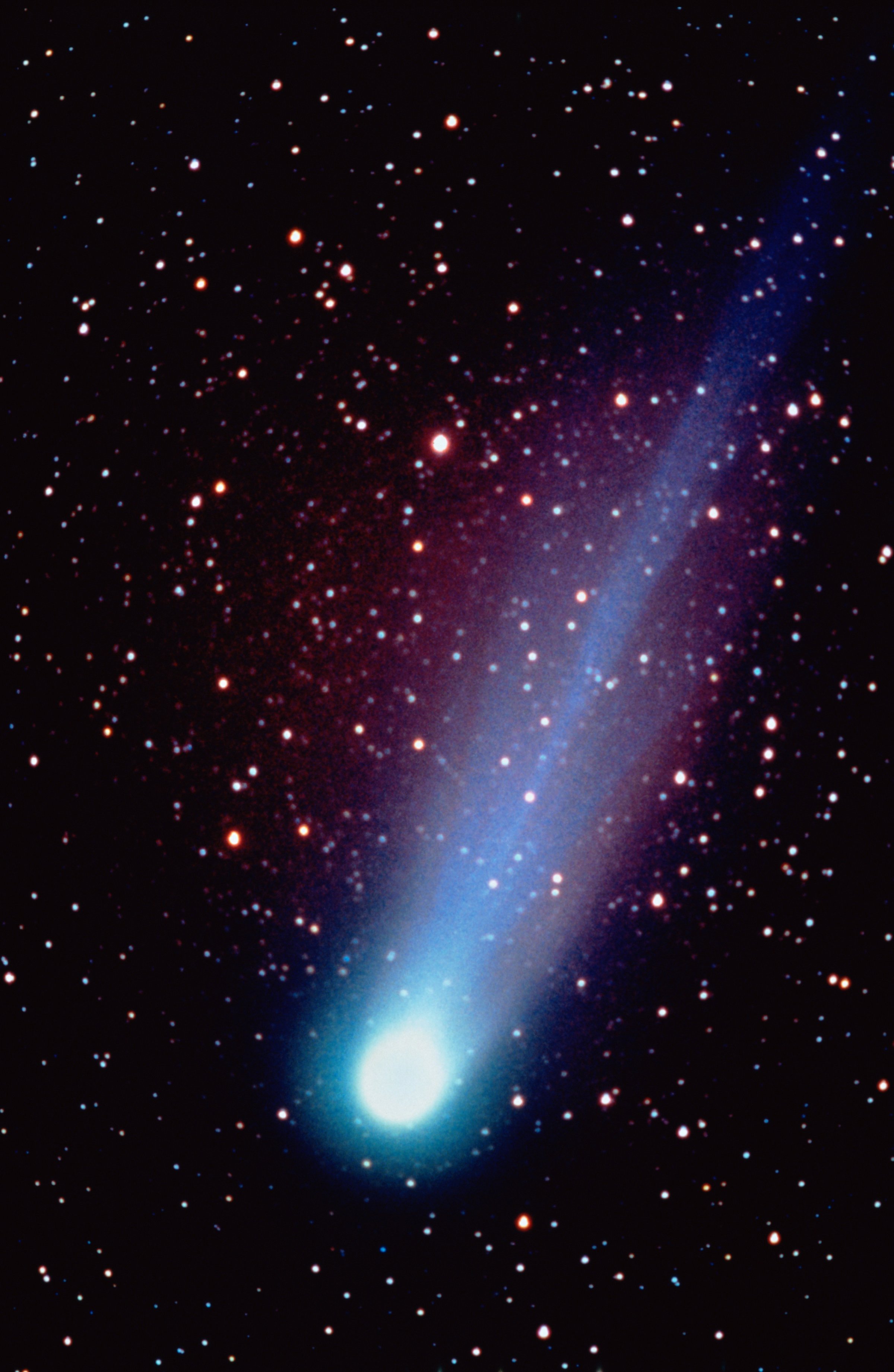
The term “Oort Cloud” may be obscure for many people, but it’s familiar terrain for astronomy buffs. It’s a giant spherical swarm of trillions of proto-comets, lurking at the outer fringes of the Solar System, so far away that it may stretch a quarter of the way to the nearest star. They’re proto because they’re not technically comets unless they get knocked out of orbit and fall toward the heat of the Sun, whose warmth turns their long-frozen ices into a halo of dusty gas and, sometimes, a tail as well.
A pair of very unusual objects announced at last week’s Planetary Science Meeting in Tucson, however, have complicated this seemingly straightforward story. The first, found in 2013, has an orbit that clearly shows it came from the Oort Cloud—but while it resembles a comet in some ways, it didn’t light up like one even after it warmed. The second, found just this past September, also came from the fringes of the Solar System. This one doesn’t even resemble a comet, let alone act like one: it looks more like a rocky asteroid.
Except asteroids aren’t supposed to live in the Oort Cloud—and that creates just the sort of mystery scientists love. “We’re all very excited,” admits Karen Meech, of the University of Hawaii, who led the discovery team. But while both objects surprised researchers, both turn out to confirm two pieces of cosmic wisdom, one from a half-century ago and the other much more recent.
The old wisdom comes from Jan Oort himself, the mid-20th-century Dutch astronomer the Oort cloud is named for. He theorized that long-period comets, with highly elongated orbits lasting more than 200 years, came from a distant, spherical cloud that surrounds the Solar System. “He figured this out based on just 13 comets,” says Meech. “It’s really amazing.”
The idea is that the comets formed closer in, along with the rest of the Solar System, but that many were flung outward in gravitational interactions with Neptune and other giant planets. That notion was reinforced long after Oort’s time, when planetary scientists realized that the giant planets might have changed their orbits significantly soon after they were born; that motion would have ejected icy bodies in vast numbers.
Oort also suggested that the objects that eventually fell in again would be especially bright the first time around, since they’d have lots of ice on their surfaces—precisely what happened when Comet Hale-Bopp showed up in 1997. “On their very first passage through the inner Solar System,” says Meech, “all of that sublimates away, so after that you just don’t see them.”
The object discovered in 2013, she says, which is known as (deep breath) C/2013 P2 Pan-STARRS, fits the profile of what an Oort cloud comet should look like on a second or later return to the inner Solar System, and, says Meech “it may be proof at last that Oort was correct.”
Even as the astronomers were trying to figure out what they were seeing, though, the second object, C/2014 S3 Pan-STARRS, showed up (in both cases, the objects were found by the Pan-STARRS1 telescope, atop Mauna Kea, in Hawaii). It didn’t act like a comet either, but unlike the first object, it also didn’t much resemble one, as a close look at its composition revealed.
And that seems to support an idea advanced back in 2011 by Kevin Walsh, of the Southwest Research Institute, along with several colleagues. Their computer models of the newborn Solar System found that the giant planets should indeed have migrated from their original positions, moving first in toward the Sun, then out to where they are today. As they moved out, says Meech, “they would have dragged about fourteen Earth masses worth of material with them and thrown it outward.”
That material, in the form of asteroids, could have ended up in the Oort Cloud along with the proto-comets. Even as recently as a decade ago, this theory would have seemed crazy. Now—as so often happens—the very old solar system is teaching us something very new.
More Must-Reads from TIME
- Why Biden Dropped Out
- Ukraine’s Plan to Survive Trump
- The Rise of a New Kind of Parenting Guru
- The Chaos and Commotion of the RNC in Photos
- Why We All Have a Stake in Twisters’ Success
- 8 Eating Habits That Actually Improve Your Sleep
- Welcome to the Noah Lyles Olympics
- Get Our Paris Olympics Newsletter in Your Inbox
Contact us at letters@time.com